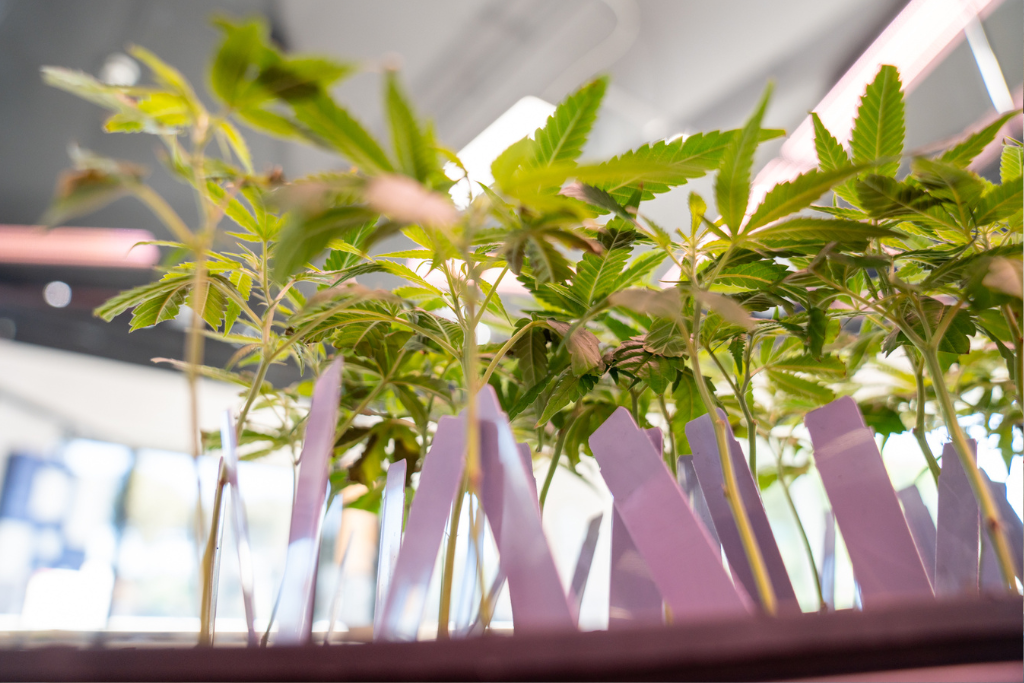Now that it is legal to grow cannabis in California, many are seeking out information on how to successfully cultivate at home. Not sure where to start with clone care? The Artist Tree is here to help guide you on your journey of growth.
When cultivating, your goal is to end up with female plants that have strong genetics. Though people can germinate seeds, it doesn’t guarantee it will be a female plant, which is what grows the actual cannabis flower. Purchasing a clone will give you the best chance of having a female plant with strong genetics, a nice smell, a nice taste as well as a large yield.
Where to Buy a Clone
At The Artist Tree, we offer a wide variety of cannabis clone plants and cultivation supplies to jump start the at-home growing process. But you’re probably wondering, how exactly do I take care of a cannabis clone? These are our recommendations for proper clone care.
Things You Need To House Your Clone
Before you start, consider your future grow area. If you are growing outdoors or in a greenhouse, learn how the conditions in your area will affect your clone and its needs. In general, you will need planting pots at various sizes.
- Gallon pot to allow your clone to develop her rootball.
- Fabric pot or plastic pot with plenty of drainage holes.
- Quality soil & growing mediums
- Water
- Nutrients
- If growing indoors you will need a grow tent and grow lights.
Types Of Growing Mediums
While soil with compost is usually the most common choice for home cultivation there are other methods to consider. Soil is the best choice for growing organically and some cultivators credit this media to contributing to a more quality taste in the flower, it can also pose a higher risk of pest infestations. It’s also worth considering that most commercial soil only contains enough nutrients for 3-4 weeks of plant growth so be mindful of adding nutrients to your schedule.
- Soil/Compost – Low degree of difficulty and cost
- Coco/Perlite – Medium degree of difficulty with low to medium cost
- Rockwool – Medium/High degree of difficulty and medium cost
- Hydroponics – Medium/High degree of difficulty and high cost
Conditioning And Care
After picking out a clone plant, we recommend bringing it home immediately and planting it as soon as you can. Because of this, we suggest prepping your transplant station prior to purchasing your clone. Preparing your growing media depends on what you are using. For example, coco coir blocks need to soak before being broken up and then rinsed. Other ingredients used in a media can be perlite, oyster shell meal, worm castings or other fertilizers.
After preparing your growing medium, partially fill your pot with it. Set your clone in the medium, leaving the top of the rockwool cube that surrounds the clone’s roots about an inch from the top of the pot. Fill in the area around the rockwool cube with additional medium. Press down on the medium lightly with your hands in order to prevent air pockets forming.
Typically, clones are kept under 16 hours of light by fluorescent or LED lights. These lights are more gentle compared to the sun. Therefore, as we transition them to their pot life, these clones will need to be introduced to sunlight or other strong lighting, gradually. Outdoors, for the first few days do partial or indirect sunlight. Shade will be the clone’s best friend as it adjusts to normal light.
Feeding And Watering Your Cannabis Clone
A common mistake is to frequently overwater your plant. When you water it, you want roughly a fifth of the water to drain from the bottom of the pot. Some experts suggest letting the media dry up a bit. When feeding, it’s important to remember that it is possible to over feed. Most seasoned growers recommend only feeding once or twice a week to avoid this. If your plant needs moisture more than this, give it plain water between feedings. When choosing nutrients for your plant, it’s a safe bet to pick a line of nutrients made for cannabis. Products like Fox Farm’s Big Bloom will provide feeding instructions on the label for the amount of nutrients you add to your water.



